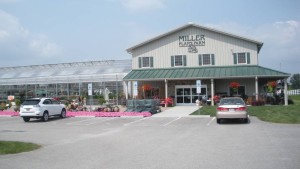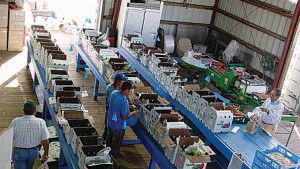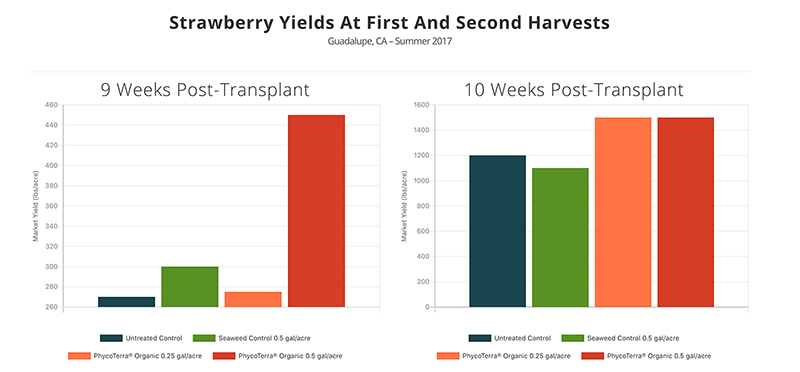Small Producers Talk Profits
A sixth-generation family of growers. A Ph.D. in vegetable crops. A couple with no background in agriculture. A vegetable transplant specialist.
What do these people have in common? They are by definition “small” growers. I had a chance to speak with the heads of these operations to get some pointers on how they maximize profit potential that you may be able to use on your farm. The locally grown movement has taken hold, and these farms have figured out how to take advantage of it, particularly with CSAs, farm markets, and encouraging the public to visit the farm.
These growers discuss the importance of asking the right price for your produce (which means knowing your own costs), how to manage money, marketing strategies, how to accommodate customers both at the retail outlet and
CSAs, ways to engage local chefs, and why you need at least one “people person” on your farm.
While they all come at it from a different direction, each has figured out its specific niche to ensure profits.
David Miller
Miller Plant Farm
York, PA
160 acres

David Miller
David Miller, a fourth-generation grower, is known for specializing in vegetable transplants for other commercial growers, but he also grows vegetables for a CSA program, retail, and wholesale.
Miller Plant Farm produces on a total of 160 acres; 50 acres are devoted to vegetables. Sweet corn makes up half of the vegetable acreage. As the Millers want to offer variety to their CSA customers, they also grow 8 types of tomatoes, several types of hot and specialty peppers, and various other vegetables to round out the lineup.
The operation also includes 65,000 square feet of heated production greenhouse space, devoting about one-third of the space to ornamentals and hanging baskets for the retail garden center. The rest of the greenhouse produces 40 varieties of tomatoes, 15 varieties of hot and specialty peppers, and other vegetables to offer to commercial growers as well as home gardeners.
Additional Outlets
To keep their name out there and have other sales outlets — and in addition to their own store — the Millers sell their produce at one of York’s farmers’ markets, and they are involved in wholesale “direct store delivery,” which is their wholesale outlet.

In 2011, the Millers opened an air-conditioned and handicap-accessible facility consisting of a 2,500-square-foot market and an 11,000-square foot area for a retail greenhouse.
Photo courtesy of Miller Plant Farm
“We deal directly with the [grocery stores’] individual produce managers rather than taking it to a distribution point,” Miller explains. “What we like about that is you can develop a relationship with the produce manager.”
The CSA is another outlet for the farm and this year marks its fifth season. When the Millers began a CSA program, they had 125 customers. Today they have more than 700. Customers pay upfront for their CSA share, which allows the Millers to purchase fertilizer, seed, etc. and stay off their line-of-credit. The CSA also helps bring traffic into the store, Miller says.
“About 600 of those people pick up their vegetables in the store every week, and they have already paid. While they are in the store for their weekly CSA share pick up, you usually can get them to buy a few other things,” he says.
The store he’s referring to is the new farm market the Millers had constructed in 2011 complete with a garden center and bakery. Miller says he opted for the expansion because his son, Dustyn Miller, joined the business as had his nephew, Steve Slyder.
He encouraged Dustyn to get a degree in agri-business rather than major in horticulture.
“I told him he didn’t need a horticulture degree; he can learn that part on the job,” Miller says. “He needs to learn how to handle money more than anything else. I’ve seen many small farms — or any size farm — go out of business because they couldn’t manage their money.”
4 Tips To Help You Get People Through The Farm Market Door
Courtesy of David Miller, Miller Plant Farm
1. Convenience and location go hand in hand. Build close to a main road.
2. Reach out to the public via Facebook and use an email list to be in contact with customers, sending newsletters, coupons, and updates letting them know what is happening at the market and on the farm. The Millers have an email list of more than 2,000 customers.
3 Get to know your customers. They want to get to know you.
4 Show appreciation. When there is a surplus of poinsettias, the Millers send an email to their CSA customers, inviting them to visit the store and pick up a free plant for the holidays.
Mike Fusilier
Fusilier Family Farms
Manchester, MI
300 acres

Mike Fusilier
Mike and Kathy Fusilier are fifth-generation growers and have the sixth generation — their four children — now working with them. The 300-acre farm devotes about 150 to vegetables, which includes about 60 acres of sweet corn, 5 acres of tomatoes, and the remaining 85 producing other vegetables.
They start vegetables in a greenhouse to get a jump on the competition in the spring. They use low tunnels to produce peppers, tomatoes, cucumbers, and squash, which also helps get a crop to market before other growers in the area.
Before planting, however, Fusilier stresses the importance of having an established market. “We can grow anything we want, but we have to have a place to move the product,” he explains.
The concept of working smarter, not harder, also applies to where you sell your produce, Fusilier says. At one time the farm was selling crops at 21 farmers’ markets. Today, that number has been reduced to 13.
“We cut out the small ones and figured out which [markets] are the best,” he explains. “It also works best when we have one of our family members at a farmers’ market, so the customers can actually talk to a farmer.”
They also wanted to encourage people to visit the farm, so an on-site farm market was constructed six years ago. The Fusiliers take orders for flowers and vegetables at their farm market and have a bakery, a winery, or a combination of the two in their five-year plan.

Peppers are grown in low tunnels to help the Fusiliers get a jump on the growing season. Photo courtesy of Fusilier Family Farms
“We are about 30 miles from Ann Arbor, so we have to give people a reason to come to our farm market,” Fusilier adds.
In addition to the market, the family has several reasons for the public to visit the farm: pick-your-own pumpkins, hayrides, a summer and fall festival, and the annual Customer Appreciation Day, which kicks off the season in April.
The CSA Business Angle
Another part of the family’s business is the CSA operation, which was started in the early 2000s. Expanding on the CSA model a couple of years ago, the farm began working with some businesses in the metro Detroit area, delivering produce to employees. Fusilier says his wife, Kathy, has been handling that venture and coordinates produce sales through the human resources departments of each company they work with.
But no matter to whom you are selling your products, Fusilier says you shouldn’t be afraid to ask for a fair price that provides a decent profit. After all, you are in this to make money. To do that, it’s imperative to know your cost of production.
3 Ways To Increase Visits To Your Farm
Courtesy of Mike Fusilier, Fusilier Family Farms
1 Host Festivals. At Fusilier Family Farms, they hand out free hamburgers on Customer Appreciation Day each April, and patrons are encouraged to walk the farm and visit the greenhouse.
2 Stagger Events. In addition to Customer Appreciation Day, have other events such as summer and fall festivals that highlight specific crops. The Fusiliers’ summer festival focuses on sweet corn and the fall event highlights pumpkins.
3 Make Memories. Release butterflies, hire a clown, offer pony rides — anything that will make visitors remember you.
Nancy Roe
Farming Systems
Research, Inc.
Boynton Beach, FL
10 acres

Nancy Roe
Farming Systems Research, run by Nancy Roe and her husband, Charlie, produces vegetables on about 10 acres to support their subscription program, which is similar to a CSA, and to provide local produce to area chefs.
The land they use is on Green Cay Farm, owned by retired growers Ted and Trudy Winsberg, who at one time had about 300 acres of farmland.
Nancy, who holds a Ph.D. in vegetable crops from University of Florida, got to know the Winsbergs years ago when she was doing research on the farm for her doctorate. Fast forward to 2016, and her operation grows about 20 different vegetable crops, with tomatoes being the biggest.
Today, the operation caters to chefs, which has become an integral part of the business, as well as its subscription holders.
Subscription Payment Plan
Farming Systems Research allows subscription holders to pay ahead of time for the season and get a discount for paying upfront, or pay monthly, with payment due at the beginning of the month.
“The reason we did that is some people wouldn’t be able to put out that much money at once,” she explains. “About two-thirds of our people pay monthly.”

When you produce many different crops, it is important to pay attention to optimum cooling temperatures for each crop being stored.
Photo courtesy of Farming Systems Research/Green Cay Produce
Produce distribution is a little different from a typical CSA, too. About two-thirds of their customers have their vegetables delivered to their homes.
“Admittedly it is a little crazy,” Nancy says of the delivery service. “We have eight people who deliver for us, handling two routes a day, four days a week.”
Now in their 16th year, Nancy says during the last three years, the subscription numbers have dwindled to about 300, most likely due to competition with online shopping clubs offering more choices. At one point, they were topping out at around 400 subscribers.
“It really doesn’t hurt us because we are located in a place where we have unbelievable restaurants, so we can still make the money,” she says. “This year the restaurants will be 60% of our income and the rest will be from the subscriptions.”
She attributes the farm’s success with restaurants — selling to chefs — to its location: halfway between Boca Raton and Palm Beach.
How did they earn the confidence of area chefs? The short answer is by joining the local chapter of the American Culinary Federation. They went to meetings, met people, and hosted a few meetings to network with more chefs. From there, they earned additional business via word of mouth.
Dos and Don’ts For Small Producers
Courtesy of Nancy Roe, Farming Systems Research
Do stay really small, or do get really big. If you are small, all the labor can be handled by you and your family. The other option is to get really big so you can hire someone for labor, food safety, etc.
Don’t eliminate resources. Some growers think they need to focus on organic, which is fine, but remember you have many resources, such as Extension, USDA, etc. Go to meetings and learn about the pest issues in your area. Most Extension personnel now make recommendations for organic production.
Do something to add value. Be sure to emphasize value, such as an agritourism component, or value-added products such as pickles or sauces.
Don’t ignore postharvest practices. When you produce many crops, pay attention to optimum cooling temperatures for each crop being stored.
Do have someone be the face of the farm. If you sell at a farm market, CSA, or to chefs, you need someone on staff who wants to deal with people. Someone needs to be good at schmoozing — and selling.
Zay Lopez
The Produce Peddler
Mack, CO
26 acres

Zay and Leah Lopez
Zay Lopez has no background in farming. In fact, he earned his degree in sports management. While in college, however, he was bitten by the ag bug, thanks to a summer job in a fruit orchard.
Today Zay and his wife Leah have a 26-acre farm, 8 of which are used to grow vegetables, with tomatoes, peppers, and melons being their biggest crops. “We are in a region where chili peppers are popular, so we grow quite a few of those,” Lopez says.
For the past five years, the farm has been selling produce at farmers’ markets and restaurants. Two years ago the couple started a CSA.
“We were doing almost every farmers’ market regionally and stretching ourselves thin, but it gave us a good idea of what people want and what they will buy,” he says. “Plus, it gave us confidence in starting a CSA because we knew what to grow and how to grow it.”
The Restaurant Scene
It made sense to approach local restaurants regarding their produce as the couple lives in an area where there are 150,000 people.
“We can’t compete with the larger [produce] outfits, but we introduced ourselves to the owners of several local restaurants, telling them what we can offer,” he says. The biggest concern of the restaurants was price.

Selling at farmers markets gave Zay and Leah Lopez insight into what customers wanted and it gave them the confidence to start a CSA. Photo courtesy of the Produce Peddler
Lopez says it has been a learning process, providing what each restaurant needs at a competitive price when taking into account what large distributors can offer.
Zay and Leah must be doing something right, though, as they plan to expand their crop offerings. The couple had been leasing ground for about three years, and a year-and-a-half ago bought their own farm, adding some strawberries, raspberries, and asparagus to the crop lineup.
They also have about 100 hens, which provide them with eggs to sell. Lopez says he opted for the hens because several farmers’ market customers asked for farm fresh eggs.
“There are a lot of small farms around that will sell eggs from their place but no one was taking eggs to the markets,” he says. “We saw an opportunity to expand our operation and it was just one more reason for people to come to us instead of someone else. We don’t make a lot of money on the eggs because of feed costs and we only have 100 or so birds — we would have to have a few thousand to make money — but it is that added variety that keeps people coming back, especially if they are trying to decide on which CSA to join. Variety is key in a small farm operation.”
3 Tips To Help You Stand Out
Courtesy of Zay Lopez, The Produce Peddler
1 Marketing is everything. When selling at a farmers’ market, go above and beyond on your display. Use wooden crates, colorful tablecloths — whatever it takes to catch a customer’s eye.
2 Stack it high and kiss it goodbye. Put extra effort into your displays and try to maximize the amount of produce you are trying to sell.
3 Attend local events and network. Attend events to network and build relationships. Lopez cites a local food and beverage festival as an example. He and his wife set up a display to promote the farm, complete with photos showing the produce sold to CSA holders and at the farmers’ markets.










